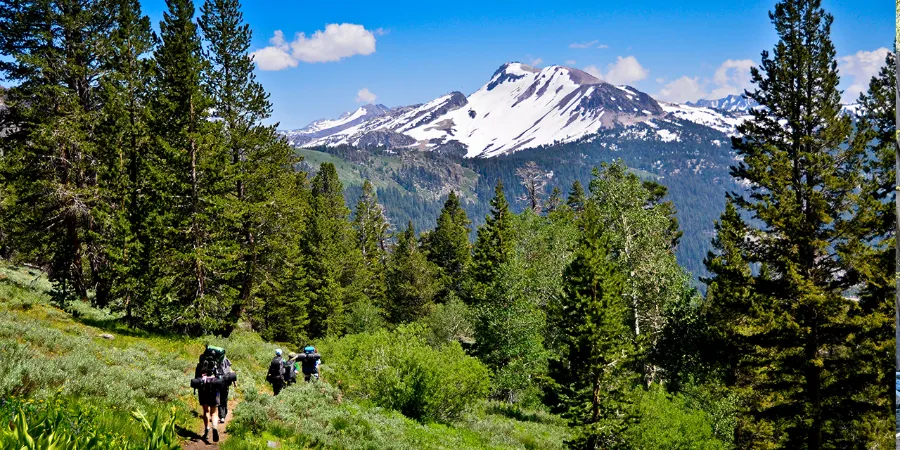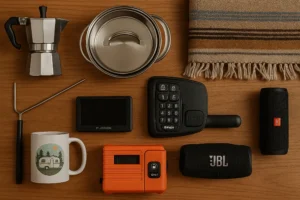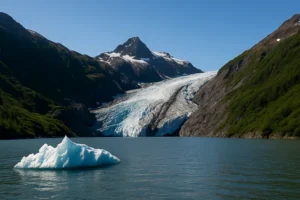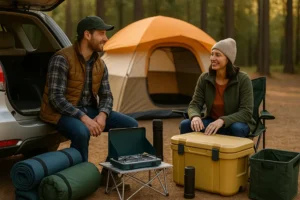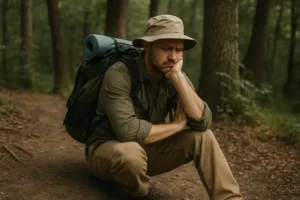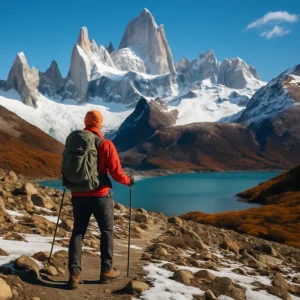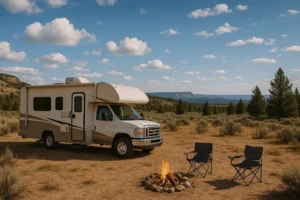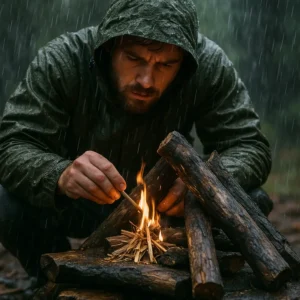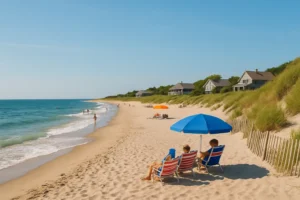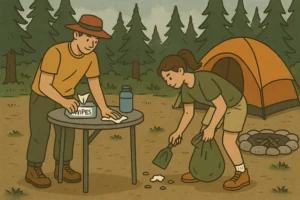There’s a long ribbon of dirt, stone, snow, and dreams that runs from the border of Mexico to the edge of Canada. It slices through deserts, mountains, forests, and everything in between. This is the Pacific Crest Trail, and walking it is nothing short of an emotional and physical epic.
On paper, it’s 2,650 miles long. In reality, it’s much more than that.
The Pacific Crest Trail Isn’t a Vacation. It’s a Transformation.
The journey starts in the southern desert. Wide skies. Dry heat. A weight on your back and a goal in your head.
But here’s the thing no guidebook truly prepares you for: the first few weeks hit hard. You arrive with high hopes, maybe even cocky confidence. You’ve trained. You’ve mapped it all out. But almost immediately, the trail begins stripping away illusions.
Pain starts in your feet, then your legs. The sun scorches your neck. Water becomes a precious commodity. And every step in the dust feels a little heavier than the one before.
This isn’t the walk in the woods you imagined. It’s a daily battle, and it’s only just begun.
Crossing the High Sierra – Snow, Rivers, and the Roof of California
Just when you start to find a rhythm in the desert, the trail elevates, literally. The Sierra section is a whole new world.
The elevation climbs above 10,000 feet. There’s snow, sometimes a lot of it, and ice-laced mountain passes that demand full-body effort to cross. Rivers surge with snowmelt. Each crossing brings real risk. The cold isn’t just discomfort anymore; it’s danger.
But then…you summit a peak. You stand above everything.
That moment? Worth it.
There’s raw beauty in the Sierra that recharges your soul. Towering granite. Frozen lakes. Forests that feel prehistoric. And despite the aches and altitude sickness, something shifts. You start to love the pain. It becomes part of the process.
You stop fighting the trail. You start moving with it.
The Grind: Northern California
This is where most people hit their wall.
Not because it’s the hardest terrain. Actually, the elevation softens. The trail rolls through long, wooded stretches with occasional town stops. On paper, it looks easier.
But mentally? It’s a minefield.
By now, your body hurts in new places every day. The novelty is gone. The adrenaline is low. And worst of all, the finish line still feels impossibly far away.
This stretch is where dreams die. People quit. Some injuries take hikers out. Others simply can’t take the emotional load.
But if you can keep moving, if you can walk through the boredom, the burnout, the quiet and unremarkable days, you start to understand what endurance really means.
Oregon – Fast Miles, Faster Thoughts
When Oregon hits, there’s a burst of energy. The trail is flatter, smoother. Daily mileage increases. People call it a “break,” but it’s not easier, just different.
The mental game continues. You start obsessing over miles. 25 per day? Not enough. 30? Still not satisfied. The focus shifts from survival to speed, and suddenly, you’re racing through places too beautiful to rush.
Lakes appear. Volcanoes in the distance. You move faster but feel less present.
This is a warning worth remembering: don’t let the obsession with progress ruin the experience.
The Pacific Crest Trail is about more than just finishing. It’s about how you finish.
Washington – The Final Test
Washington is breathtaking, and brutal.
Mountains rise again. The trail cuts sharp and steep. Cold air returns. Rain falls almost daily. Gear gets soaked. Blisters reappear.
Your body is tired in ways you didn’t think possible. But your mind? Sharpened.
This is the final stretch, and every mile is laced with emotion. The beauty here feels earned. The trail throws one last challenge at you, can you stay focused when your body is breaking?
For those who do, the Canadian border greets you with humility. And awe.
There’s no crowd. No medals. Just a wooden monument in the woods. And that’s enough.
Because by then, you’re not the same person who started in the desert.
What You Really Learn on the Pacific Crest Trail
Walking from Mexico to Canada teaches you more than just backpacking skills.
You learn patience. Every day demands small, repeated effort. No shortcuts.
You learn to live with discomfort. Cold mornings. Wet socks. Constant hunger. It becomes normal.
You learn to let go. Schedules don’t matter. Weather changes everything. Hitches happen. Towns close. The unexpected becomes the routine.
You learn to listen, to your body, to the forest, to the people you walk with.
But most of all, you learn who you are when everything else is stripped away.
Actionable Tips for Future Hikers
If you’re considering hiking the Pacific Crest Trail, take this advice seriously:
1. Train for the Mental Game
Sure, you should hike with a loaded pack. But also train your mindset. Practice being bored. Hike when it’s cold, wet, and miserable. These are the conditions that break people, not just the miles.
2. Don’t Overplan Your Gear
Your needs will change. What works in the desert might fail in the Sierra. You’ll learn as you go. Be open to swapping things out. Less is more, but comfort matters.
3. Pace Yourself Early
The first few weeks will tempt you to go hard. Don’t. Your joints aren’t ready. Start slow. Build mileage carefully. Avoid injury at all costs.
4. Respect the Snow
If you’re entering the Sierra early, snowpack matters. Be ready for navigation without trail markers. Learn how to cross rivers safely. Always know where your next bailout is.
5. Find a Trail Family, Or Don’t
Some people thrive in groups. Others need solitude. There’s no right way. Just make sure you’re honest with yourself about what you need to stay sane out there.
6. Plan Resupplies, Loosely
You’ll need food every 3–7 days. Some resupply stops are remote and expensive. Others are easy. Don’t stick rigidly to a spreadsheet. Be flexible. Adapt to what the trail gives you.
7. It’s Okay to Cry
People break down. It’s normal. Let it happen. Then get up and keep walking.
The Trail Will Break You, Then Build You
The Pacific Crest Trail isn’t a checklist. It’s not a flex, and also it’s not something you do just for a story at the bar.
It’s a mirror. A teacher. A grinder of ego.
There are no guarantees. Some finish. Some don’t. But everyone is changed.
You’ll come back physically wrecked, emotionally raw, but sharpened. Your perspective on time, comfort, relationships, everything, will shift.
And years later, when your muscles have long healed, when your gear is retired, you’ll still dream about it.
The trail never leaves you. And if you’re ready for it, that might just be the greatest gift it gives.
FAQs
The Pacific Crest Trail stretches roughly 2,650 miles from the Mexican border to the Canadian border. It passes through deserts, mountains, forests, and varied terrain.
While the miles are physically demanding, the mental game often proves harder. Boredom, burnout, weather changes, and emotional fatigue can break hikers as easily as steep climbs.
Most thru-hikers start in the spring to avoid extreme desert heat and reach the Sierra after snow begins melting. Timing matters to balance weather conditions in each section.
Gear needs change by section—light setups for the desert may not be adequate for the snow in the Sierra. Flexibility is key, and swapping gear as conditions change is common.
Resupply typically happens every 3–7 days at towns or outposts along the trail. Some are easy to access, while others are remote and more expensive.
It’s a personal choice. Some hikers thrive in a “trail family,” while others prefer solitude. The key is knowing what environment helps you stay motivated.
Beyond physical accomplishment, the trail teaches patience, adaptability, and resilience. Many return changed—mentally sharper, more self-aware, and with a deepened perspective on life.

